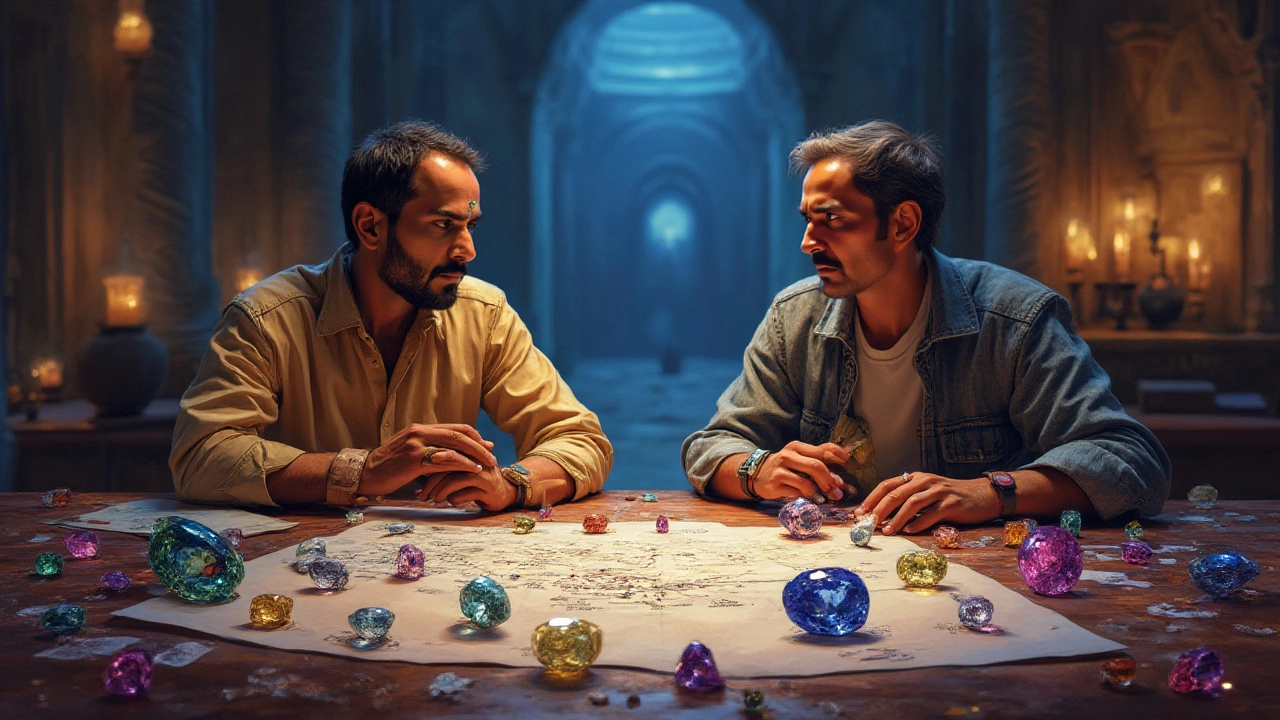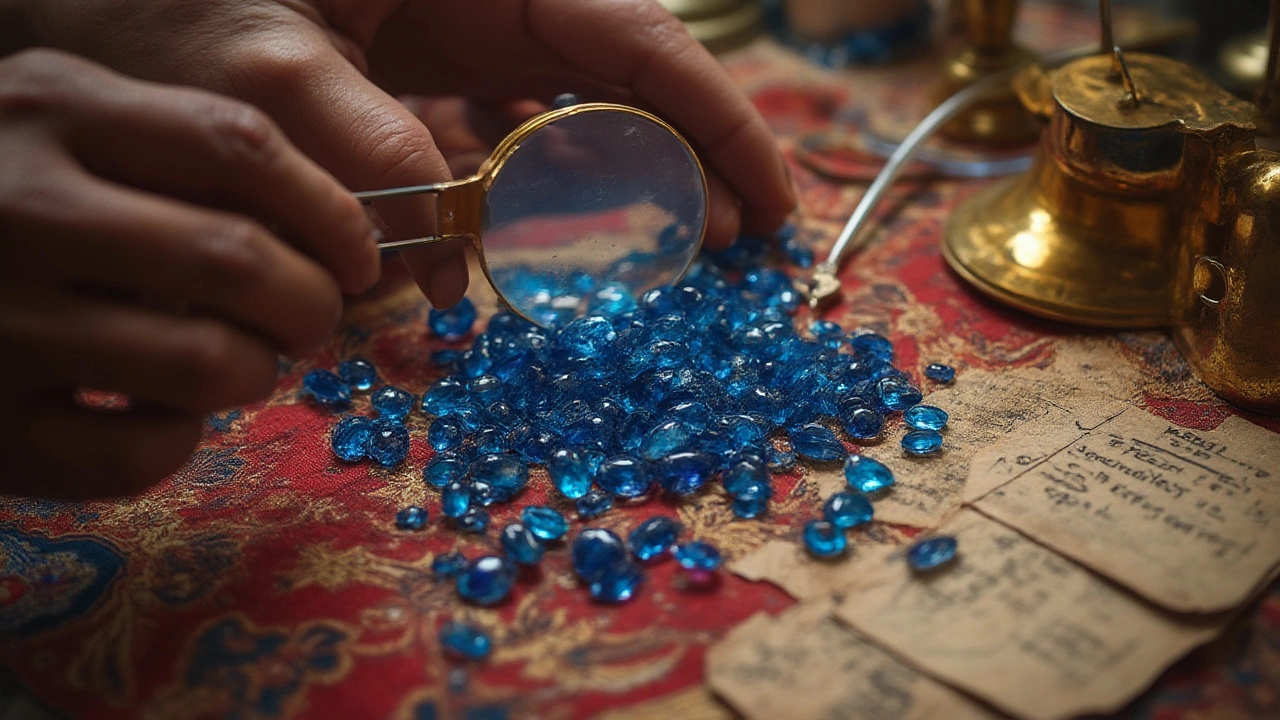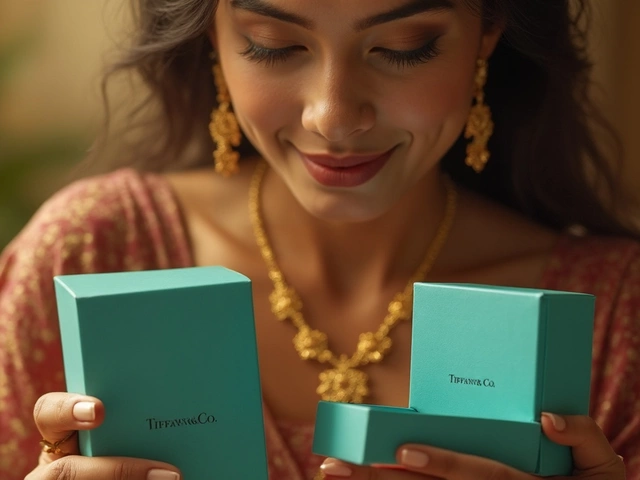Imagine staring at a blue sapphire ring in a shop window, mesmerized by its deep color. The salesperson leans in and whispers, "This one’s actually from India." Suddenly, you’re curious—are sapphires from India real or just a clever marketing pitch?
History of Sapphires in India
India has always had a swirling love affair with gemstones. Some of the oldest sapphire mines in the world hail from Kashmir, a region nestled high in the Himalayas. Back in the late 1800s, explorers stumbled upon dazzling blue stones in Kashmir’s rough mountains. For decades after, these sapphires from Kashmir would be the toast of the world’s gemstone elite. Royals from London to Istanbul wanted nothing but these velvety blue beauties in their crowns. Jewellers dubbed Kashmir sapphires as the "rarest of the rare," often fetching record prices at auctions even today. The famous Cartier and Tiffany’s competed fiercely to stock Indian-origin sapphires in the 20th century.
But India’s story with sapphires goes deeper than old mines. Royal families across the subcontinent used sapphires as both protective talismans and status symbols. You might be surprised to learn that ancient Indian texts mention sapphires—called "neelam" in Sanskrit—as far back as 200 BCE! These weren’t decorative, either. Sapphires were believed to ward off evil and even bring users good fortune. Some astrologers in India still recommend wearing sapphires after carefully checking your birth chart. That cultural legacy means millions today seek "real" Indian sapphires—genuine, powerful, authentic gemstones from native soil.
What Makes a Sapphire Real—And How Does India Fit In?
Let’s get real for a second: not all sapphires are created equal. A sapphire is a variety of the mineral corundum, colored by trace elements—typically iron and titanium. Lab-grown sapphires might look perfect, but they’re produced in factories, not in nature. What sets an Indian sapphire apart? Indian sapphires—especially those from Kashmir—are completely natural, having formed over millions of years under high pressure and temperature deep in the earth. Some gemologists say the best stones have an almost velvet-like blue with subtle undertones of purple or cornflower.
Here’s where it gets interesting. Genuine Indian sapphires are usually mined in three main regions: Kashmir, parts of Tamil Nadu, and Orissa. Kashmir sapphires are legendary, but mining there dwindled in the early 20th century. Most "Kashmir" sapphires you’ll find on the global market today are from old stock or estate jewelry. Tamil Nadu’s Pailin mines and the Orissa region’s small deposits produce sapphires in different shades—ranging from deep blue to light blue-green. Thailand and Sri Lanka might have taken the lion’s share of global sapphire production, but Indian stones are still considered some of the world’s favorites by collectors.
How about authenticity? India’s government has stepped up regulations on gemstone exports, and reputable stores will hand you a certificate of authenticity from a recognized gem lab. If someone offers you an "Indian sapphire" without a certification, be wary. Synthetic sapphires—those made in labs—can sometimes sneak in, especially in busy gemstone hubs like Jaipur. Always, always ask for certification and, if possible, a reputable lab’s opinion.

How to Identify a Real Indian Sapphire
Here’s the tricky part—figuring out what’s real and what isn’t. You don’t need to be a gemologist to spot basic fakes if you know what to look for. Real sapphires—regardless of country—should feel cool against your cheek. They’ll also usually have small inclusions, or "birthmarks." These are the tell-tale fingerprints of Mother Nature, things lab stones often lack or can't copy convincingly. If a sapphire looks too perfect, chances are it’s synthetic or at least heavily treated.
- Color: Kashmir sapphires are known for their "velvety" blue; Tamil Nadu sapphires often lean towards lighter shades, sometimes with a tinge of green.
- Inclusions: Natural stones have tiny internal wisps or feathers. If you spot bubbles, that’s a red flag—it could be glass or a poorly made fake.
- Glow: Some Indian sapphires show a soft bluish-white glow under sunlight, not a neon shine. Too much brilliance often signals heavy chemical treatment.
- Certification: Always ask for a grading report from a well-known lab like GIA, IGI, or India’s own Gem Testing Laboratory (GTL).
The price tag can be another clue. Genuine Kashmir sapphires sell for astronomical amounts—sometimes $100,000 or more per carat at auction. Other Indian-origin sapphires can still fetch thousands, though they’re more accessible. If you stumble upon a supposedly "Kashmir" sapphire at bargain rates, stop and question everything. Most likely, it’s not the real deal.
Common Myths and Marketing Tricks
Marketing around gemstones can get sly. Some sellers might label blue stones as "Kashmir sapphires" just to bump up prices, even when those stones come from Africa or Sri Lanka. Genuine experts, though, know how to spot the difference. The lush blue of a real Kashmir sapphire is so distinct and rare, many gemologists can recognize one at a glance—though exact proof comes from lab tests.
- Myth: "All blue sapphires from India are Kashmir sapphires". Truth: Kashmir is a specific region, and supply has been depleted for over 100 years.
- Myth: "Sapphires improve your fortune automatically." Truth: The belief is ancient, but there’s no scientific evidence that wearing a sapphire will change your luck. Still, the tradition is honored by many across India.
- Myth: "Indian sapphires are softer than Sri Lankan sapphires." Not true—hardness for natural sapphires worldwide is 9 on the Mohs scale.
- Myth: "You can identify an Indian sapphire by color alone." Not accurate; while some colors are typical, only chemical and microscopic analysis tells the full story.
Many Indian jewelers will share stories of buyers asking for "astrological sapphires," expecting some kind of magical transformation. My own aunt, on the advice of a family astrologer, once wore a sapphire said to have been mined in Orissa. She swears her headaches vanished. Science or no, those kinds of personal stories keep these myths alive.

Buying Indian Sapphires: What You Should Know
If you’re out shopping for sapphires in India (or anywhere else), bring a little skepticism along with your wallet. Here’s how to steer clear of overhyped or fake stones:
- Insist on lab certification, not just a local store’s promise.
- Check stone origin—Kashmir, Tamil Nadu, Orissa—ask for documentation if you want authenticity.
- Be wary of cheap, “rare” sapphires. True rarity means high price; there are no hidden bargains in the world of genuine high-quality gemstones.
- If possible, have the stone checked by an independent gemologist before finalizing your purchase.
- Don’t be fooled by deep blue glass imitations or "doublets" (slices of sapphire glued to cheap stone bases).
Here’s a quick comparison to keep in mind:
| Origin | Famous For | Availability | Typical Price Per Carat (USD) |
|---|---|---|---|
| Kashmir, India | Velvety Blue, Rarity | Extremely Rare | Over $100,000 |
| Sri Lanka | Light to Deep Blue, Clarity | Common | $500-$10,000 |
| Madagascar | Bright Blue, Large Stones | Common | $100-$2,000 |
| Tamil Nadu, India | Mixed shades, Traditional Value | Limited | $300-$5,000 |
Personally, Ananya and I once spent hours in Jaipur's old markets looking for a genuine Indian sapphire for a friend’s engagement ring. Almost every shop had a “rare, real Indian” stone behind the counter. Only a couple could actually provide certificates and let us take the stone for testing. The authentic stone had tiny inclusions and a beautiful natural hue—not the glassy perfection of the fakes.
The real takeaway? Indian sapphires are absolutely real. But not every stone labeled “Indian” is genuine, and not every blue gem from India is a sapphire worth your investment or trust. Take your time, dig a little deeper, ask for papers, and if possible, work with someone who knows their way around the world of gemstones. That sapphire in your ring could carry a slice of history, a glint of Himalayan blue—if you choose wisely.



